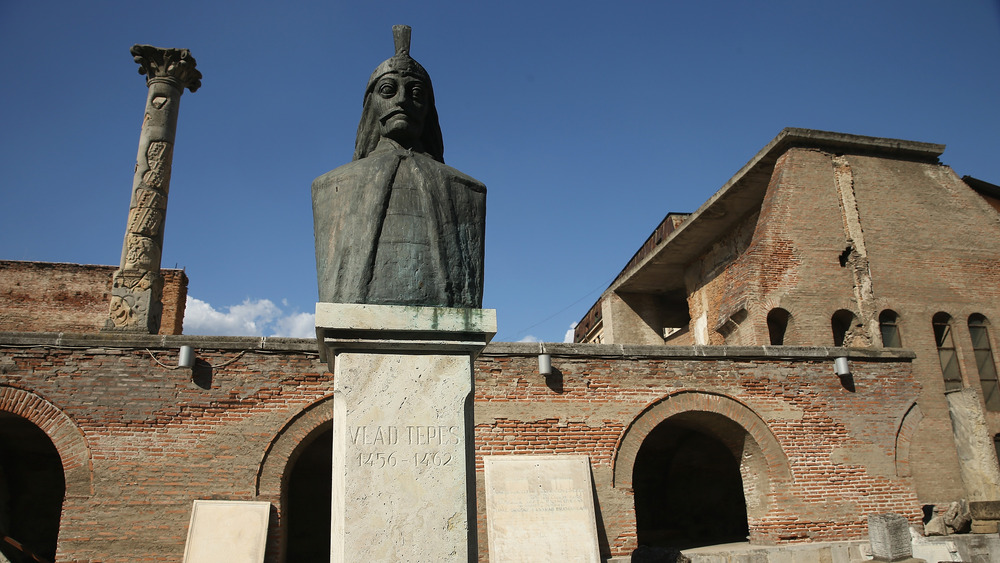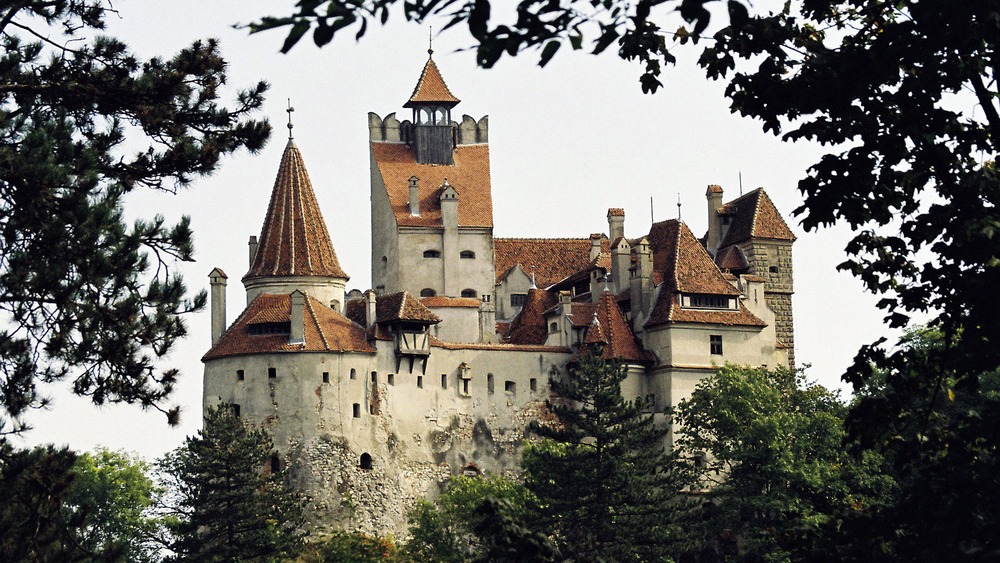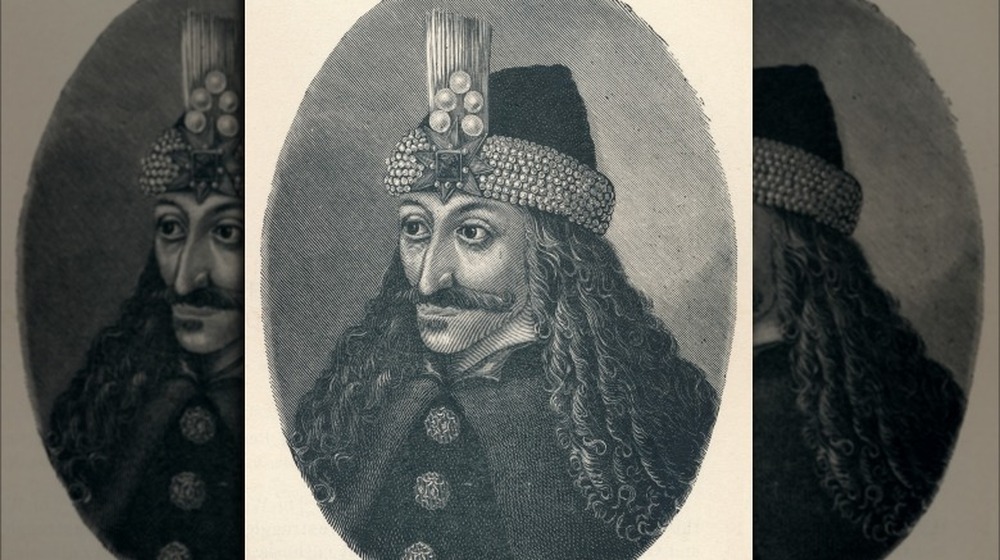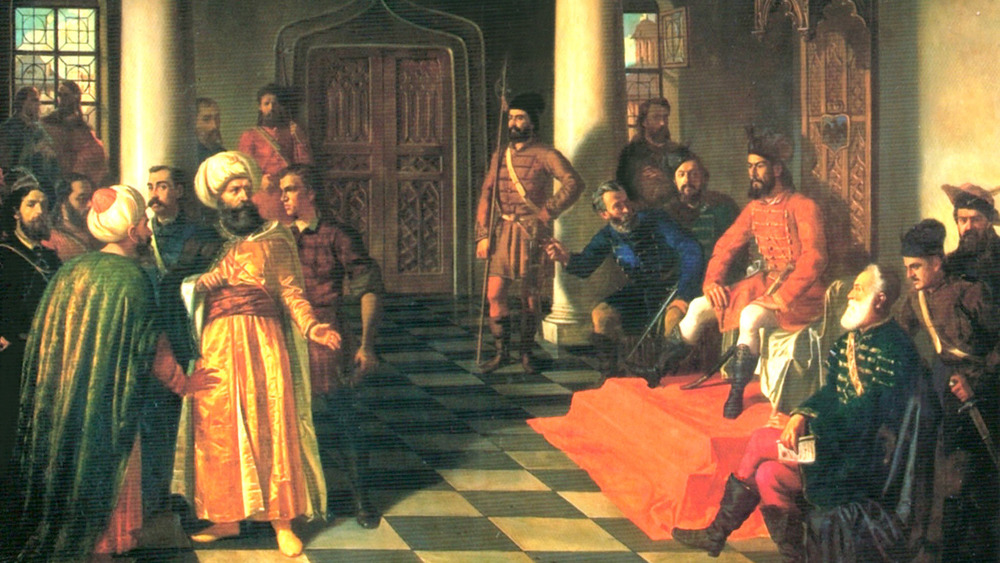How Vlad The Impaler Stole The Throne From His Cousin
It should go without saying, but being nicknamed "the Impaler" is probably a sign that your life took a very wrong turn somewhere. As in being the honest-to-goodness, historical inspiration for Count Dracula, and by extension, our entire vampire mythos as it sprung from Bram Stoker's 1897 Gothic horror novel Dracula. Granted, Bram Stoker borrowed from a variety of sources, including Scottish writer Emily Gerard's writings on the blood-sucking creature Nosferatu (per the BBC), and the foggy, spooky weather of Aberdeenshire, Scotland (also per the BBC), but the idea of an imperious, bloodthirsty noble terrifying local mortals? Yeah, that was Vlad. Except Vlad was much, much worse than a fanged immortal, to a ludicrously excessive extent.
Born in 1431 in Transylvania — modern-day Romania — Vlad the Impaler is easily one of history's most unequivocally sadistic, deplorable, and malevolent figures. Born Vlad Tepes (Valid III), to his father, Vlad Dracul (Vlad II), Vlad's moniker "Dracula" simply means "son of Dracul," as Britannica explains. Dracul — "dragon" in Latin — got his name upon being inducted into the Order of the Dragon, a military organization, after defending the Holy Roman Empire from the Ottomans. Does this mean Vlad III was Christian? Not quite.
Take the whole "impaler" thing: how did he get the title? Well, he impaled people on poles. Up the rectum or vagina, out through the throat, neck, or shoulder, often slowly to prolong suffering. Before he did this, though, he stole the throne of Wallachia from his cousin.
Imprisoned by enemies, watching his cousin ascend the throne
Granted, some stories about Vlad the Impaler, as NBC News tells us, are likely embellished, like how he dipped his bread in victims' blood. But really, if he planted 20,000 pole-impaled corpses in a forest to deter incoming Ottoman troops (as Mental Floss explains), can fiction make things much worse? He definitely razed villages willy-nilly, including livestock, nailed diplomat's hats to their heads when they said that religious custom forbade them to remove their hats, and in 1462 bragged, "I have killed peasants, men and women, old and young... 23,884 Turks, without counting those whom we burned in homes or the Turks whose heads were cut by our soldiers."
Stealing a throne from his cousin, then, might not seem like too big of an offense. To Vlad, it was his birthright. He'd spent his childhood in the Ottoman Empire as a prisoner after being captured in 1442 along with his brother, Radu. His father, Dracul, brought his sons to a supposed diplomatic meeting with the Ottoman Sultan Murad II, as Live Science explains, and all three were carted off to a dungeon in Tokat Castle, Turkey. Dracul used his sons as collateral to return home to govern as voivode (warlord) of Wallachia, while Vlad and Radu were raised by the enemy.
When John Hunyadi, regent-governor of Hungary, invaded Wallachia in 1447, he murdered Dracul and installed Vlad's cousin Vladislav II to the throne. This, then, drove Vlad's revenge.
Vengeful Vlad vs. everyone
Up to this point, Vlad's tale could make quite the striking narrative about righting injustices. Imagine it: Vlad escapes from his captors and disguises himself as a peasant to cross borders and take back his family's throne in a bloodless coup; he then brokers a reluctant pact with the Turks to fight against Hunyadi the invader; he expels Hunyadi, installs his cousin as reagent, reconciles with the Turks, and reigns in peace for decades. But sorry, no. In reality? Everyone just murders and/or is murdered.
It's not certain how Vlad escaped (or was released from) the Turks, but in 1448 he arrived home after having learned of his father's death the year prior. While in captivity, Vlad was apparently treated decently, but was resentful and rebellious, and subject to martial discipline when he stepped out of line, as New World Encyclopedia relates. (It's suggested this is how Vlad's future torture techniques were inspired.) All the while, he was steeped in the culture of his enemy and taught by them. His brother Radu essentially succumbed and allied himself with the Ottomans, and Vlad considered both him and their father, and all of his father's conspiratorial boyars — Wallachian nobles — who sided with the Hungarian Hunyadi, traitors.
Once back in his home of Wallachia, as ThoughtCo says, Vlad led a multi-point campaign against Hunyadi, his cousin Vladislav II, the boyars, Radu, the Ottomans — basically anyone who got in his way to inheriting the title of voivode.
Vlad develops his penchant for pole piercing
The same year Vlad returned to Wallachia, his cousin and throne occupier Vladislav II left on a crusade to fight the very Ottomans from whom Vlad had just escaped. Vlad's older brother, Mircea, who hadn't played a part in proceedings till then, was "blinded with hot iron stakes and buried alive" by political rivals in Targoviste, because sure, might as well heap some added cruelty on top of things. And if this didn't already sound enough like Game of Thrones, there was no system in place defining rules of succession in Wallachia, which meant that any potential successor could claim the throne provided they had enough power. The boyars could elect someone, but as ThoughtCo explains, pressure from outside military forces — Ottomans and Hungarians, mainly — played a strong hand.
And so when Vladislav II was away, Vlad came to play. He jumped on the throne, said "mine," but as Explore the Archive explains, was booted out by the end of the year when Vladislav returned from his campaign. Undeterred, Vlad fled to Moldavia and stayed with his uncle, Bogdan II. It would take nearly a decade, all the way until 1456, for Vlad to mount an invasion of Wallachia. He killed his cousin Vladislav, Hunyadi the Hungarian, and then embarked on his ultimately short-lived, but eternally remembered, reign of terror. It was then that he began impaling his enemies — anyone at all, really — to inspire absolute fear and horror.



